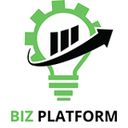Application Development software: purchase guide
Application Development Software in 2025: Building Smarter, Faster, and Without Limits
What Is Application Development Software
Application development software gives teams the tools to design, build, deploy, and iterate software applications—without starting from scratch. Whether you're a full-stack developer coding enterprise systems or a business analyst dragging blocks in a no-code interface, these platforms provide the framework to bring digital ideas to life.
In 2025, app development is no longer limited to IT departments. Marketing teams launch landing pages. HR teams build internal tools. Ops teams design custom dashboards. And behind it all is powerful, flexible development software that enables faster releases, tighter collaboration, and more control across the business.
From cloud-native builds to mobile-first workflows, these platforms are redefining what it means to "develop an app."
Why It Matters to Your Company
Software is now your business. Whether you sell it or not, your customers and employees interact with digital experiences every day. If those systems are clunky, slow, or disconnected, it reflects poorly on your brand—and your bottom line.
The right application development software helps you create tools that fit your unique workflows, not the other way around. It allows you to reduce reliance on third-party tools, lower development costs, and bring ideas to market faster. More importantly, it unlocks innovation from across your organization—not just the dev team.
Imagine giving your marketing team the power to spin up a branded microsite without IT. Or letting operations build a supply tracking dashboard with real-time data. That's what application development software makes possible.
How to Choose the Right Application Development Software
The best platform is the one that fits how your team actually works—and helps you get from idea to product without friction. Start by considering your team's technical abilities. Do you need a low-code environment for business users, or a robust backend framework for experienced developers?
Flexibility is key. Look for a platform that allows integration with your existing stack—whether it's APIs, databases, or authentication systems. Cloud-based deployment is now the norm, but make sure your solution also supports version control, collaborative editing, and responsive design.
Ease of use shouldn't come at the cost of power. Great development platforms balance drag-and-drop simplicity with advanced customization—so you can scale from quick prototypes to full-scale production apps without switching tools midstream.
Don't forget support and scalability. Can your platform grow with you? Does it offer documentation, active communities, or technical onboarding? A tool is only as valuable as the outcomes it helps your team deliver.
How to Implement Application Development Software Successfully
Rolling out app development software isn’t just a technical process—it’s cultural. Start by identifying which departments or processes will benefit most from custom apps. Choose a pilot team with real business problems and a willingness to experiment.
Make training part of your rollout. Even drag-and-drop tools have a learning curve. Offer internal resources or tap into vendor-provided bootcamps and tutorials. Encourage shadow IT to step into the light—business users often have the clearest ideas about what needs building.
Governance matters too. Create clear guidelines around who can publish apps, what standards must be met, and how data is secured. Empower autonomy, but with guardrails.
Finally, celebrate early wins. When a non-technical team builds an app that saves time or increases accuracy, share the story. Adoption grows when people see real, practical success.
Top Application Development Software in 2025
| Software |
Key Features |
Pricing |
Trial & Demo |
Best For |
| QuickBase |
Workflow automation, custom app creation, data modeling |
Pricing on request |
✅ Free version
✅ Free trial
✅ Demo |
Businesses that need fast, no-code app solutions across teams |
| Kaseya VSA |
Automation, remote monitoring, multi-device support |
Pricing on request |
✅ Free version
✅ Free trial
✅ Demo |
IT teams seeking backend management + custom tool creation |
| Kinetise |
Mobile-first drag-and-drop builder, real-time preview, no coding required |
Pricing on request |
✅ Free version
✅ Free trial
✅ Demo |
Non-tech teams creating native mobile apps |
| kintone |
Cloud-based app builder, team collaboration, custom workflows |
Pricing on request |
✅ Free version
✅ Free trial
✅ Demo |
Teams seeking flexible business process apps |
| LeanKit |
Visual Kanban boards, progress tracking, team collaboration |
Pricing on request |
✅ Free version
✅ Free trial
✅ Demo |
Agile development teams needing visual workflow support |
What’s Changing in Application Development in 2025
Low-code platforms are no longer niche—they're mainstream. In 2025, companies aren’t just building internal tools with these platforms—they’re launching full customer-facing products. That shift means tools must support better UX, stronger APIs, and richer integrations.
Artificial intelligence is also playing a bigger role. AI-assisted coding, smart layout suggestions, and error prediction are embedded in many platforms, helping both developers and non-tech users build more efficiently.
Cross-platform is the new standard. Applications built today must work seamlessly across web, mobile, and even edge devices. Development software now includes native responsive design, offline access, and multi-device syncing by default.
And finally, collaboration is central. App development is becoming a team sport—with developers, designers, product managers, and business users all working in the same environment. Expect platforms to offer real-time editing, granular permissions, and built-in feedback tools to support that shift.
Conclusion
Application development software is no longer reserved for specialists. In 2025, it’s a key enabler of speed, flexibility, and innovation—across every team and every department.
The right platform won’t just help you build apps. It will help you build better ways of working.
Because today, if your tools can’t evolve with your business, your business gets left behind.



















